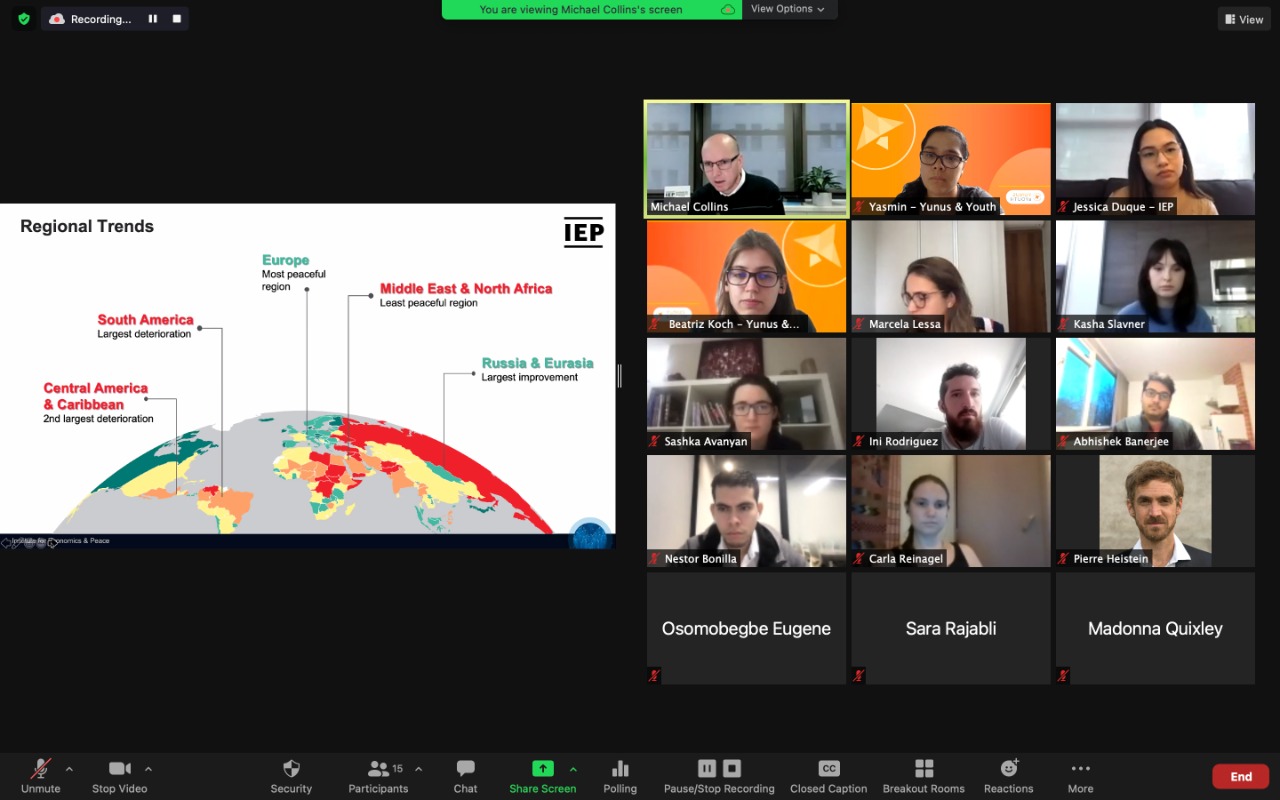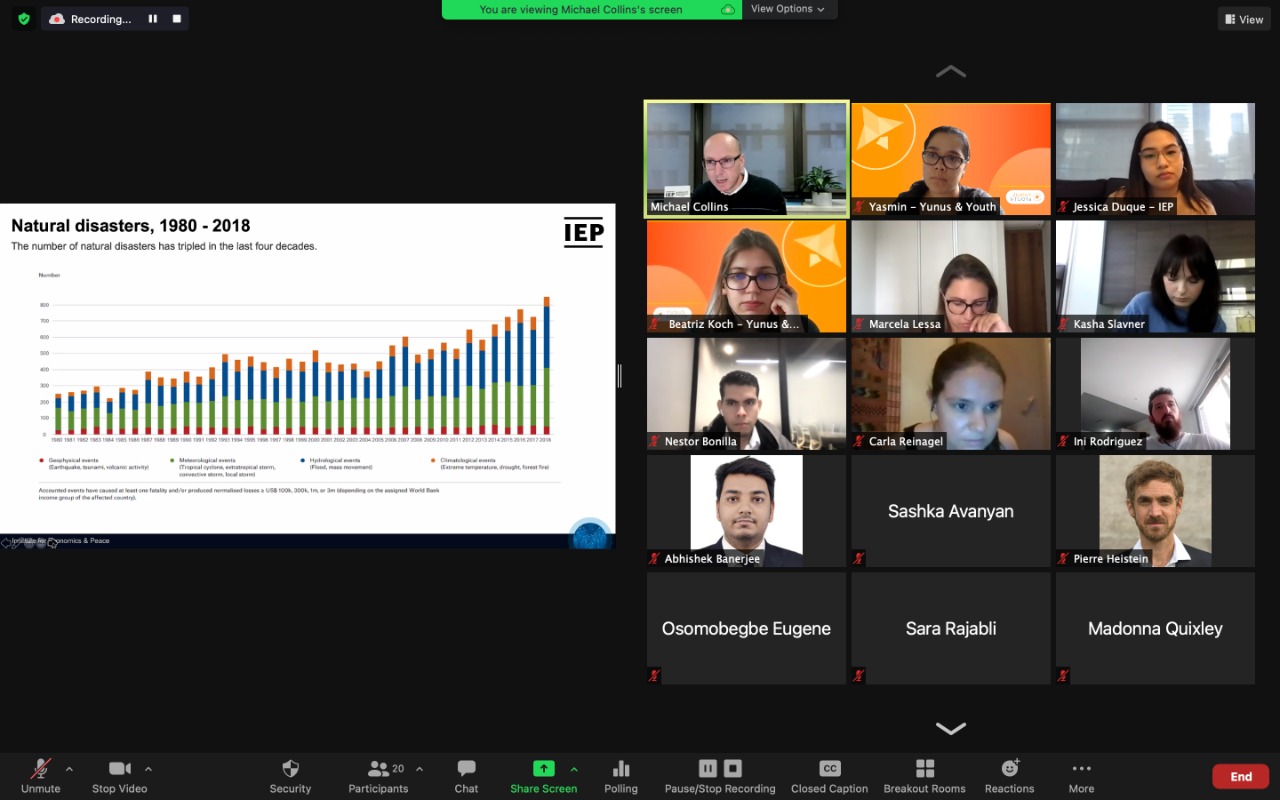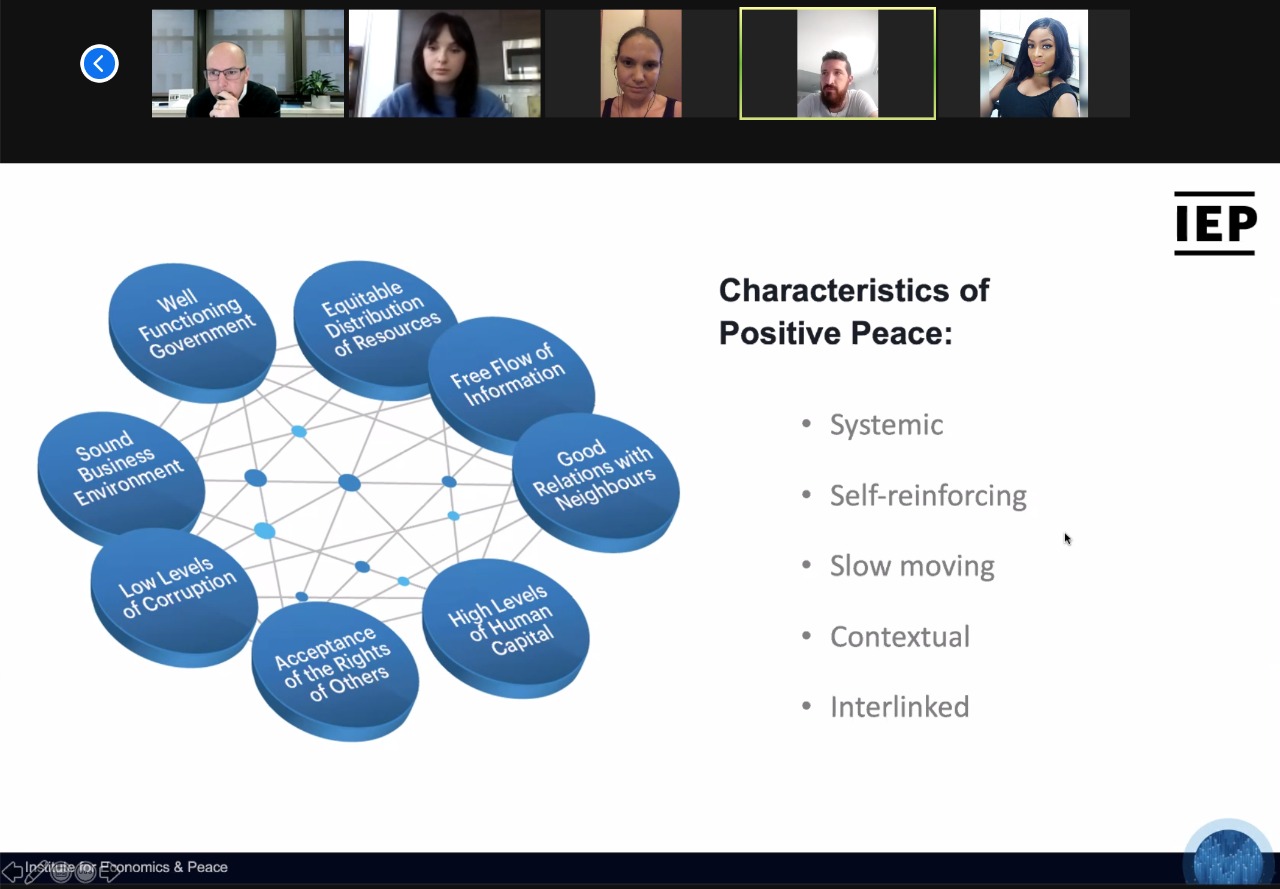Positive Peace and Social Entrepreneurship
Our learnings from the the Institute of Economics and Peace workshop
On January 20th, the Y&Y Community had a very special workshop. The Institute Economics and Peace (IEP) joined us online to share the Positive Peace Framework and to help us grasp our impact on peace building as social entrepreneurs.
The IEP aims to create a paradigm shift in the way the world thinks about peace. They do this by developing global and national indices, calculating the economic cost of violence, analysing country level risk and fragility, and understanding Positive Peace.
Initially, few of us knew what “Positive Peace” was and how we could contribute to it. We were not sure if our social businesses necessarily did. We were also only partially aware of the current peace situation in the world and its trends. But, as the workshop went on, we had new insights, collected new knowledge and were able to see clearly how relevant our social businesses are to build and maintain peace in our communities.
In this article, I will share with you our main learnings from the workshop!
Here are a few things we learned:
There are two types of peace: negative and positive peace. “Negative peace” is the “absence of violence or fear of violence”. “Positive peace” encompasses a broader set of criteria. It has to do with “the attitudes, institutions and structures that create and sustain peace in a society”. The two ways are measured differently.

IEP has been measuring negative peace through its Global Peace Index for the past 14 years, ranking 163 countries according to their relative states of peace, and using 23 indicators. 6 are measures of ongoing domestic and international conflict, 10 are measures of internal societal safety and 7 are measures of militarization. Key findings show that over the last year, peacefulness has decreased. This is the 9th deterioration in the last 12 years. 81 countries have become less peaceful and 79 countries have become more peaceful (GPI 2020).

Improvements were driven by reductions on the impacts of terrorism, homicide rates and deterioration of international commerce of weapons. The decrease of peace is linked to the increase of refugees, intensity of political conflict and the increase in the political terror scales (which are related to extrajudicial killings, imprisionment without trial and torture).

The most peaceful country in the world is Iceland. Half of the 10 most peaceful countries are European. Scandinavian countries tend to rank well every year and, with the exception of Singapore, all of them are democracies. On the other hand, Afghanistan is the least peaceful country, followed by Syria. They have both been involved in external and internal conflicts (GPI 2020).

It’s easier to end peace than to build it. At the workshop, we learned that there’s a rising inequality on peace. The most peaceful nations tend to continue to improve and the least peaceful ones tend to deteriorate rapidly.
The current pandemic, ecological threats and high population growth rates tend to increase the deterioration of peace worldwide. Countries that have been the most affected by those also showed lower levels of peace. For example, Afghanistan is the country with the most ecological threats. Ecological threats also reduce the amount of water available, for instance. Conflicts around water scarcity have doubled in the last few years! Countries affected by resource scarcity due to a high population density also witness other forms of conflict.

Positive peace is related to the characteristics that peaceful societies have. There are eight pillars to positive peace:
1- Well-functioning government
2- Equitable distribution of resources (education and healthcare, for example)
3- Free flow of information
4- Good relations with neighbors
5- High levels of human capital
6- Acceptance of the rights of others
7- Low levels of corruption
8- Sound business environment
These are the pillars that create and sustain peace in countries with high levels of positive peace. Those countries tend to have a higher resiliency in crises, perform better in environmental issues, have higher levels of wellbeing and perform better on the Sustainable Development Goals.

Improvements in Positive Peace are:
1- Systemic, which means that improvements in one pillar create improvement on others.
2- Self-reinforcing, meaning that the more countries invest in positive peace, the more it increases.
3- Slow-moving, that is, it takes time to build and sustain positive peace.
4- Highly contextual, because each pillar will look different based on the different needs of people in each country.
5- Interlinked, meaning that a strong pillar locally translated into a national impact and vice-versa. This means that every group of individuals can enforce peace locally and have a national effect!
Lastly, the workshop was helpful for the Yunus & Youth team to better understand how Y&Y contributes to peace worldwide.

We found that we contribute to at least four pillars of Positive Peace:
We contribute to “High levels of human capital”, through providing capacity building opportunities for Y&Y Fellows. We also contribute to “Sound business environment”, by helping Y&Y Fellows create a sustainable business model. We also focus on “Acceptance of rights of others”, by fostering a diverse and knit global community and advancing principles of respect and diversity. And lastly, “Free flow of information”, since our program is free for Y&Y Fellows and a variety of resources are available online for everyone.
To learn more about Positive Peace and reflect on how your social business contributes to peace, visit the IEP’s website and check out the numerous resources available!
